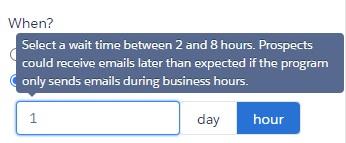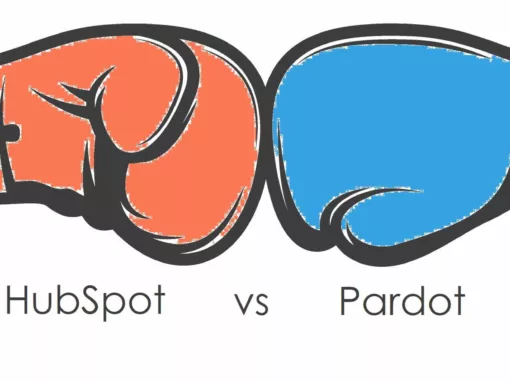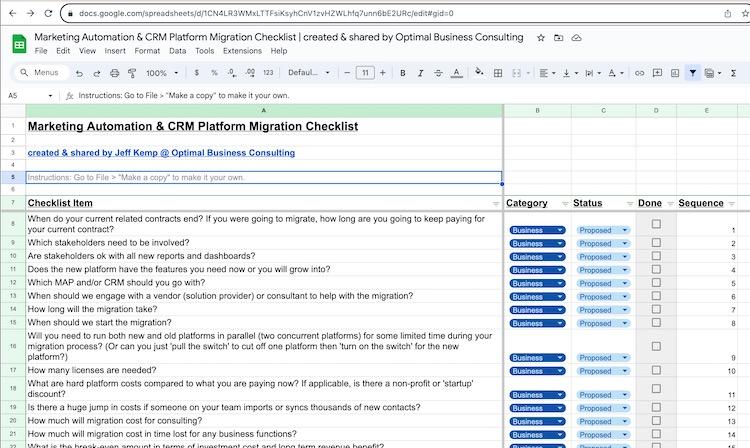Salesforce Winter ’24 Release Notes are out. The most exciting update for Marketing Cloud Account Engagement is that prospects can soon wait in Engagement Studio programs for time intervals of less than one day.
The request to reduce Engagement Studio wait times to under one day lived in the Salesforce ideaexchange for more than six years. It amassed over 800 votes and at the end of 2021 was estimated for the Spring ’23 release. The release date was changed to Winter ’24 in February of this year and Salesforce appears to have made it happen.
Increased precision on email sends in Engagement Studio
The inability to set a prospect wait time to a few hours for an email send was a major irritant to Pardot users. This was especially true for those who had migrated from a different marketing automation system. Many came from smaller, less expensive systems and were expecting parity with what they had: flexibility to set wait times in units of hours and minutes, not days. With Pardot, instead of being able to fire off an email hours after a prospect accessed a landing page, they had just two options: hit them immediately or wait a full day. This loose time range gave marketers no leeway on when they could target a prospect who had recently engaged with a marketing asset.
Engagement studio has shorter email wait times but are they short enough?
In the upcoming release, prospects can wait in Engagement Studio program steps in hourly time increments. But there’s still some rigidity with this enhancement because the shortest period of wait time is two hours. The hourly increments run from two to eight hours and then jump back up to one day.
Is this enough marketing wiggle room? Many users had requested the ability to wait minutes, not two hours, before ushering prospects to the next step. Most of Pardot’s competitors, including the smaller guys, provide wait times in minutes.

HubSpot delay options
Salesforce has essentially given users seven more options for automation time waits. The time increments may not be as granular as people would like. One smaller marketing automation system I’ve been impressed with is Brevo (formerly Sendinblue).

To my knowledge it has the most generous free and low-end packages. All its packages include automations, which they call workflows. In these workflows, contacts can wait minutes, hours, days, weeks and months. Other systems, including Marketo, MailChimp, HubSpot and Constant Contact, also have this level of granularity on wait times.
What’s the rush?
Salesforce has listened to its users and is giving them more options in Engagement Studio wait times. I suspect they’ll be updating their documentation soon to reflect this change, so I thought I’d include an excerpt of how it current reads pre-release.
Avoid zero-day waits. A zero-day wait is processed immediately, which for many actions is too fast! To make sure that prospects have time to interact with your assets, allow a wait period of at least one day.
There’s a lot of truth in this and I’d encourage folks to thoroughly evaluate their Engagement Studio or automations and determine which actions genuinely need to happen in a matter of minutes. I’m seeing an increasing amount of what I call ‘prospect fatigue.’ This where long-time prospects, who once interacted frequently with most outreach, no longer read emails. Or, even worse, they opt out entirely. In the world of ever-increasing digital stimulation it’s easy to feel overwhelmed.
If you’d like some help creating automations with the right mix of action and reflection, please feel free to reach out. We’d be happy to assist in striking that fine balance.
Update
The new wait times have been released and are available in Pardot Engagement Studio. If you try to enter a time under two hours, you will receive the message below. The word does change from plural to singular if the number 1 is entered, which is a nice feature. As the notification states, if emails are set to go out only during business hours, even if the email wait time is set to two hours, it may not be sent until the following day.

For reference


















0 Comments